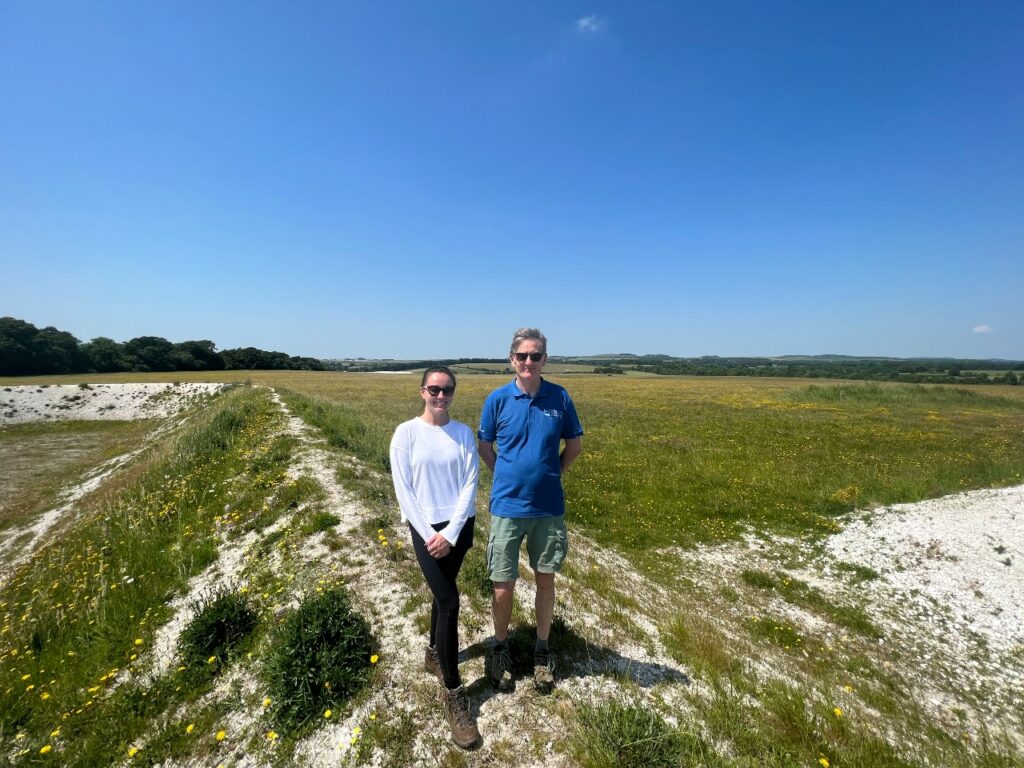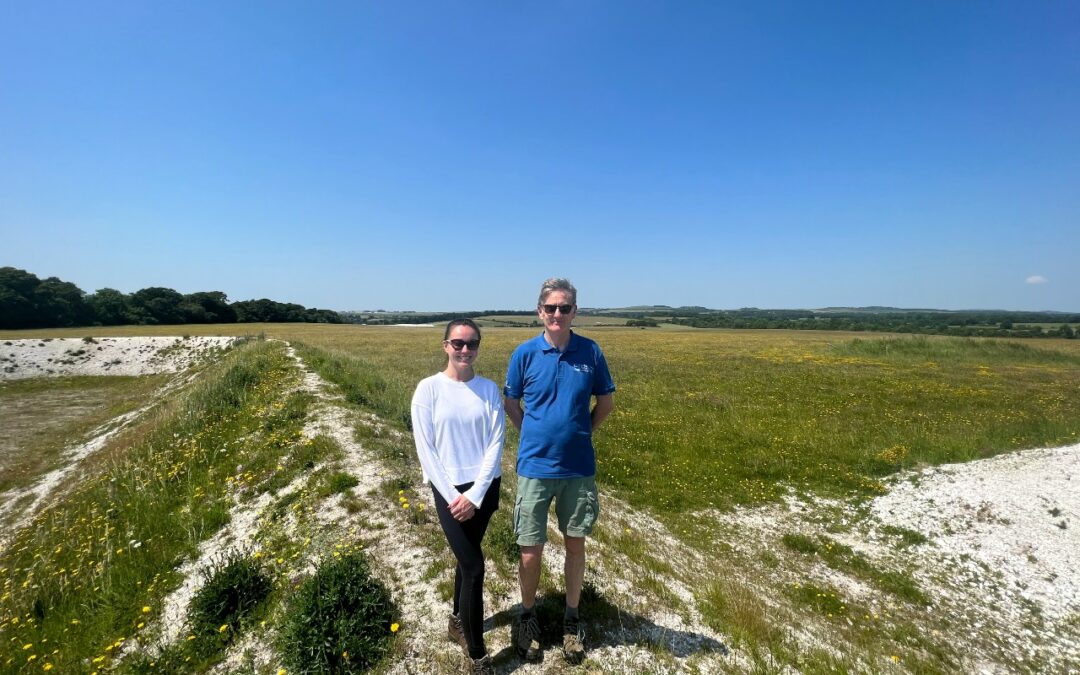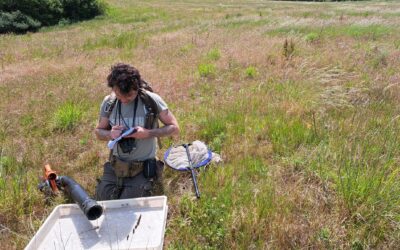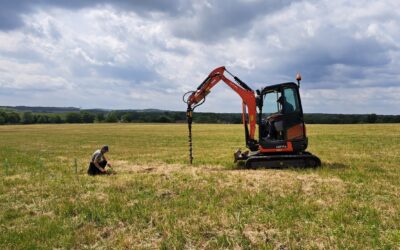Earlier this month we visited Winterbourne Downs Nature Reserve, near Salisbury, to look at their chalk grassland, as well as the butterfly banks and flower meadows they have created.
It was of particular interest to us because we are looking to establish our own plot of chalk grassland at Ewhurst Park as we have the right conditions and chalk on some of our plots.
Chalk grassland has been called the European equivalent of tropical rainforest because it is such a rich wildlife habitat, with a single square metre being found hosting up to 45 species of flowering plants.
So what is chalk grassland – technically term: lowland calcareous grassland? Essentially, it is grassland that thrives on shallow lime-rich soils. In the UK, it is found mainly in warm dry valley slopes in the south and east, although it can also be seen springing up in neglected chalk and limestone quarries, railway cuttings and roadside verges.
Chalk grassland is important because of the rich diversity of plant life it can support, which in turn supports a wide range of wildlife, including insects, small mammals and birds, many of which are unable to live on other types of land, so we can see how important chalk grassland is for conservation.

Standing on a butterfly bank with Patrick Cashman, Site Manager of RSPB Winterbourne Downs
Winterbourne has established more than 200 hectares of new chalk grassland (about the area of 280 football pitches). It’s interspersed with open cultivated land, hedgerows and shelterbelts (lines of trees or shrubs that act as a windbreak) – this combination maximises opportunities for wildlife to mix and flourish. As a result, Winterbourne has seen a huge upsurge in bees and other insects, and birds, including lapwing, stone-curlew, skylark, grey partridge, blackcaps, whitethroats and barn owls. In addition, part of Winterbourne’s regeneration project has included the establishment of chalk butterfly banks, which have attracted small blue, brown argus and brown hairstreak butterflies.
It was truly wonderful to see what Winterbourne is doing – to see how the land has come alive, with a mixture of habitats that complement one another, helping plant, insect and bird life to thrive. This, of course, is what we are working towards at Ewhurst Park, encouraging our own unique combination of land-types to fulfil their potential.
We are very fortunate at Ewhurst Park that we have a diverse range of soil types, including chalk-rich, sandy and clay-rich soils, all typical of the Reading beds. This gives us the opportunity to create a mosaic landscape and a variety of habitats.
This regeneration work requires careful management – such as the tactical sowing of different grass seeds – but it also means knowing when to step back and leave nature to its own devices, letting the types of plant life that occur here naturally to appear.
What we hope to see emerging at Ewhurst Park – and what we have already had a glimpse of – is the restoration of biodiversity and bio-abundance.




